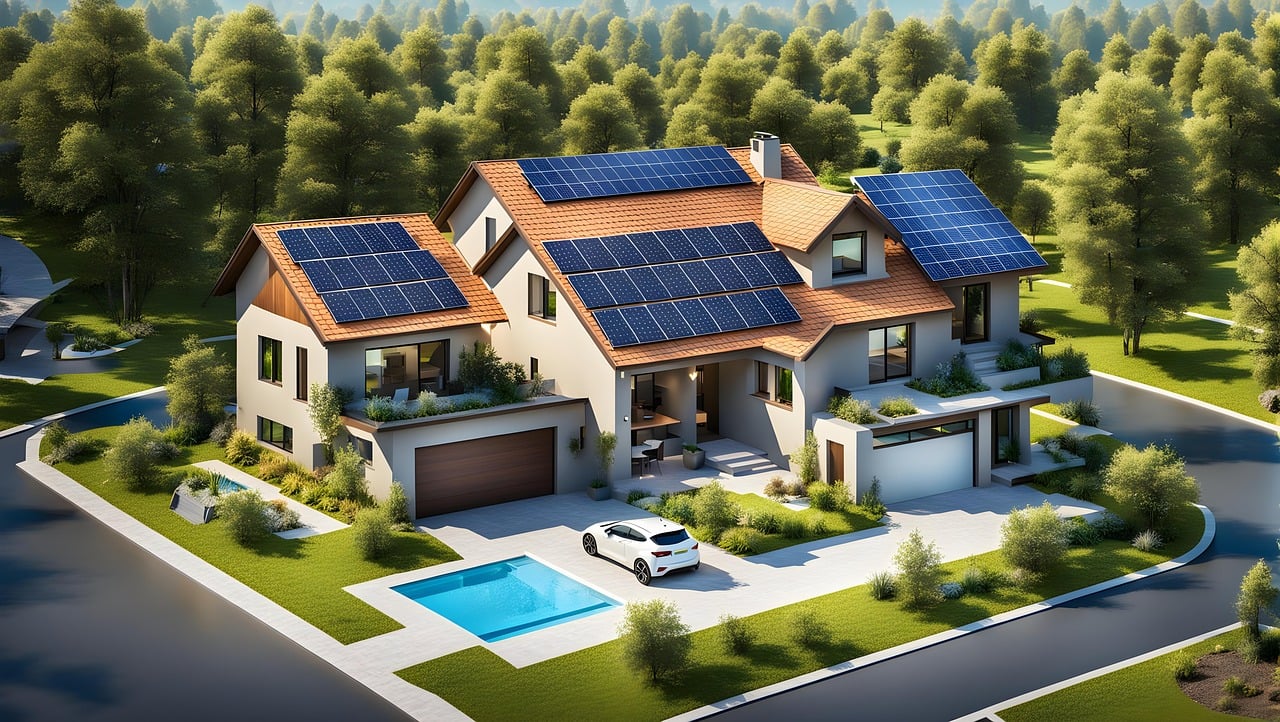
It’s All About the Amps: Your Philippines Solar System Guide
So you’re interested in solar power, fantastic! But bombarded with technical jargon and confusing options? Fear not, fellow sun seeker! This guide will be your compass, navigating the key concept of amps and its role in choosing the perfect solar system for your needs. We’ll ditch the dry tech talk and use a refreshing analogy – water flow! Buckle up, and let’s make sure your solar journey is smooth sailing (or should we say, sunshine streaming?).
Amps: The Unsung Hero of Your Solar System
Imagine your dream home, bathed in sunshine, powered by a clean, sustainable source: solar energy! But before you dive headfirst into solar panels, there’s a hidden hero you need to meet – amps.
Often overshadowed by flashy terms like watts and kilowatts, amps play a crucial role in determining if your solar system will be a sunshine symphony or a frustrating power outage. This guide will unveil the power (pun intended!) of amps, using a clear and refreshing analogy – water flow! Let’s get those electrons flowing smoothly!
Understanding Amps: The Current Crusaders
Think of your electrical system as a complex plumbing network. Water pressure pushes water through pipes, and similarly, voltage (measured in volts) creates the push for electricity to flow through wires. But here’s where amps come in:
- Amps (A) represent the actual flow rate of electricity.
Imagine the width of a pipe. A wider pipe allows for more water to flow at once, just like a higher amp rating signifies a greater volume of electricity flowing through a circuit in a given time.
The Analogy: Amps and Water Flow
Let’s discard the technical jargon for a moment. Imagine your house has two appliances:
- A nightlight: This requires a small amount of electricity, like a narrow pipe with a gentle flow of water. It might only need 0.1 amps.
- Your trusty air conditioner: This powerhouse needs significantly more electricity to function, like a wide pipe carrying a strong current of water. It might require 15 amps or more.
Here’s the key takeaway: The size of the pipe (amp rating) needs to match the amount of water (electricity) you want to flow.
Why Amps Matter in Solar Systems
So, how does this translate to solar power? Solar panels generate electricity, but the amount of current they produce (amps) is crucial. Here’s why:
- Solar panels come with a specific amp rating. This rating tells you the maximum amount of current they can generate under ideal conditions.
- Your home’s electrical needs also have an amp rating. This depends on the appliances and devices you use.
The Challenge: Matching Amps for Optimal Performance
The problem arises when your solar system’s amp rating doesn’t match your home’s needs. Imagine this scenario:
- Your solar system is rated for a lower amp output. This is like having a narrow pipe feeding your house. While it might be enough for basic appliances, it won’t provide enough “flow” (amps) to power your air conditioner or other high-demand devices. This can lead to power outages during peak usage times.
The Importance of Understanding Amps When Choosing Solar
By understanding amps, you can ensure your solar system is sized appropriately for your needs. Here’s what you can do:
- Ask about the amp rating of a proposed solar system.
- Compare this rating to your home’s estimated electrical load. This will help determine if the system can generate enough current to meet your demands.
Remember, amps are the unsung heroes of your solar system. By understanding their role, you can ensure your sunshine dream becomes a reality – a home powered by clean energy, flowing smoothly without any frustrating hiccups!
The Hybrid Hustle: Unveiling the Misrepresentation
So, you’ve learned about amps, the crucial current crusaders in your solar system. But what happens when you’re considering a hybrid system, and things get a little murky? Here’s where we unveil a common tactic – the hybrid system misrepresentation.
Imagine you’re browsing solar options, excited about the flexibility and backup potential of a hybrid system. However, some companies might try to sell you a system that doesn’t quite live up to the “hybrid” title.
Let’s break down the true hybrid hero and its imposter:
The True Hybrid Hero: A Power Trio
A genuine hybrid system combines three key players:
- Solar Power: Your very own sunshine well, generating clean electricity through solar panels.
- Battery Storage: Your local “tank,” storing excess solar energy for later use. This provides backup power during outages or peak usage times.
- Grid Connection: City water, so to speak. It acts as a supplementary source, kicking in when your solar generation and battery storage aren’t enough to meet your needs.
The Imposter: A Disguised Simpleton
The misrepresented hybrid system might be:
- A basic on-grid system: This system relies solely on the grid for backup, essentially a glorified solar panel installation. While it generates clean energy, it lacks the resilience of a true hybrid during outages.
- An off-grid system disguised as hybrid: This might seem appealing, but remember the narrow pipe analogy? If sized incorrectly, it may not provide enough amps (electricity flow) to power your entire home, especially during peak hours.
The key issue? These imposter systems lack the battery storage element – the crucial “local tank” in our water analogy. This can leave you vulnerable to power outages and potentially frustrated when your solar generation falls short.
The Importance of Amp Awareness: Avoiding the Hybrid Hustle
By understanding amps and their role in system sizing, you can avoid falling victim to the hybrid misrepresentation. Here are some tips:
- Ask about the battery storage capacity of a proposed hybrid system.
- Ensure the system’s amp rating, considering battery storage, can meet your peak electricity needs.
- Don’t be afraid to get a second opinion or compare quotes from different solar companies.
Remember, a true hybrid system is a powerful trio, offering the best of both worlds: clean solar energy generation, reliable battery backup, and grid connection as a safety net. Don’t settle for a disguised imposter that might leave you hanging during those crucial sunshine-less moments.
Beware the Bait and Switch: Sizing Up Amps to Avoid Deceptive Solar Deals
The dream of solar power – clean energy, reduced bills, and environmental responsibility – is enticing. But beware! Deceptive solar companies might lure you in with a seemingly affordable system, only to reveal a shocking truth later. This is the “bait and switch” tactic, and understanding your system’s amp capacity is crucial to avoid it.
The Enticing Bait:
Imagine a salesperson showcasing a solar system with a low price tag and minimal components – just a few panels and a single inverter. This “bait” captures your interest, and the potential savings sound too good to be true (because they often are).
The Shocking Switch:
Once they delve deeper into your home’s energy needs, the story takes a turn. They might reveal that your actual requirements necessitate a significantly more complex and expensive setup to handle the electrical load (amps). Here’s where the bait and switch tactic unfolds:
- Hidden Amp Requirements: They disclose your home needs a more complex system due to higher amp requirements.
- Inflated Equipment Costs: The solution involves multiple inverters, lithium batteries, and a potentially new electrical system, all significantly increasing the price.
- Unexpected Installation Complexity: The initial simple installation becomes complicated due to rewiring needs.
Suddenly, the initial budget-friendly proposal explodes into a multi-million peso investment with a complex installation process. Not only are you faced with unexpected expenses, but the entire project becomes far more complicated.
Remember:
Don’t be fooled by the initial “bait” of a cheap solar system. Here’s how to protect yourself:
- Be Wary of Unrealistic Price Quotes: If a price seems too good to be true, it probably is. Reputable companies will conduct a thorough assessment and provide a transparent quote reflecting your actual needs.
- Ask Detailed Questions: Don’t hesitate to inquire about the number of inverters, battery type, and potential electrical system modifications needed for your specific situation. Ensure the system is sized to handle your amp requirements (electrical load).
- Get Multiple Quotes: Compare proposals from different solar companies to ensure you’re getting a fair price and a system that truly meets your needs.
By understanding the role of amps in solar systems and being aware of the bait and switch tactic, you can make informed decisions about your solar investment. Don’t be afraid to ask questions and choose a company that prioritizes transparency and a system sized to meet your home’s electrical demands.
Empowered by Amps: Questions to Dodge the Solar Scam
Understanding amps and the hybrid system truth bomb has equipped you with valuable knowledge. But how do you translate this into action? Here’s where we empower you with questions to ask solar companies, ensuring you avoid any potential scams and make an informed decision.
Remember, a little healthy skepticism can go a long way when investing in solar power. Here are some key questions to ask:
Sizing Up Your Solar Needs:
- What is the estimated amp rating of my home’s electrical load? (This helps assess if the proposed system can meet your needs)
- Based on my amp requirements, what size solar system (amp rating) do you recommend?
- Will this system generate enough power to cover my peak electricity usage times?
Demystifying the Hybrid System:
- Is this a true hybrid system with solar panels, battery storage, and grid connection?
- What is the capacity (kWh) of the battery storage included in the hybrid system? (kWh – Kilowatt-hours, measures energy storage)
- Can you explain how the battery storage and grid connection work together in this system?
Beyond the Amps: Transparency is Key
- What is the total cost of the system, including installation and any financing options?
- Are there any additional permits or fees I need to be aware of?
- Do you offer a warranty on the solar panels, battery storage, and installation? (Ask about warranty details and coverage)
- Can you provide references from past customers who have installed similar systems? (Online reviews are helpful too)
Don’t Be Afraid to Dig Deeper:
- What is the expected payback period for this solar system? (This tells you how long it takes for the energy savings to offset the initial cost)
- Are there any government incentives or tax credits available for solar installations in my area?
- What is the process for system maintenance and repairs?
By asking these questions and understanding the answers, you’ll be well on your way to choosing a reputable solar company and a system that truly meets your needs. Remember, knowledge is power, and understanding amps equips you to be a more informed solar consumer, ready to bask in the sunshine of a successful solar journey!
Sunshine for Life: Your Solar Journey Starts Here
The world of solar power can be exciting, but also a little overwhelming. Now, armed with the knowledge of amps, the truth about hybrid systems, and powerful questions to ask, you’re ready to navigate your solar journey with confidence!
Remember, a well-designed solar system, sized correctly based on amps and your needs, can be a game-changer. It can bring you significant savings on your electricity bills, reduce your environmental impact, and provide a sense of energy independence.
Don’t be afraid to ask questions, compare quotes, and find a solar company that inspires trust and transparency. With the knowledge you’ve gained, you can make an informed decision and embrace the sunshine as a reliable source of power for your home.
So, step out into the sunshine, empowered by amps and ready to embark on a bright solar future!

















